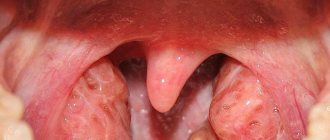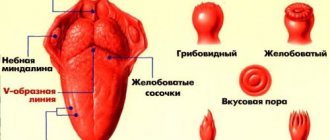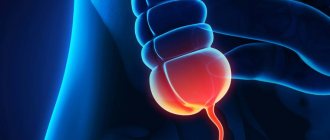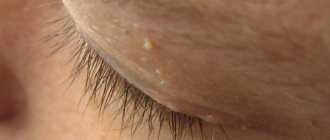Causes
What diseases are associated with nasal pain?
Sinusitis
One of the most common causes of pain in the nasal cavity is sinusitis, or inflammation of the paranasal sinuses. Many are well familiar with one of its types - sinusitis, which may be preceded by:
- coryza;
- flu;
- scarlet fever.
And even diseases of the upper teeth can cause it. With sinusitis, the maxillary (maxillary) sinus becomes inflamed. But sinusitis is associated with inflammation of any of the sinuses and the pain is localized depending on the location of the lesion.
The nasal passage narrows significantly and can be completely blocked, which eliminates the possibility of nasal secretions escaping. Their accumulation leads to even greater pain, which can spread to the temples, back of the head or to the roots of the teeth.
As the disease becomes chronic, the patient's suffering decreases somewhat and the pain becomes dull. But accompanying symptoms such as headache, malaise and slowed mental activity appear.
Furunculosis
Boils on any part of the body cause a lot of inconvenience, but their appearance in the nose is especially undesirable. Gradually increasing, the tumor narrows the passage and makes it difficult to breathe through the nose.
The pain spreads to the entire head, like a toothache. The outer part of the organ may have redness and swelling. A local increase in temperature is observed, and with severe inflammation - the entire body.
Furunculosis can be a consequence of a lack of vitamins and associated decreased immunity, as well as intestinal diseases.
Rhinitis
Rhinitis (runny nose) is more associated with general discomfort than pain.
The disease is characterized by copious discharge from the nasal cavity and inflammation of the mucous membrane. The disease is acute and easily cured. However, lack of treatment can lead to a chronic form and even to other, more serious diseases. Disturbances in normal breathing lead to sleep disturbances and negatively affect the functioning of the cardiovascular system and blood circulation.
The causes of rhinitis are:
- cold;
- allergy;
- long-term exposure to harmful factors.
Colds and acute respiratory infections in themselves are not very dangerous diseases, but they should not be completely ignored. Allergy sufferers should also be careful, since constant exposure to allergens on the nasal mucosa causes symptoms of rhinitis no less than those caused by a cold.
In addition to copious nasal discharge and congestion, allergic rhinitis is characterized by redness of the eyes and their tearing. Headaches are common. If the allergen is plant pollen, then the disease is seasonal.
Hypertrophic rhinitis is also often found, the cause of which lies in poor environmental conditions or in working in hazardous industries. If the mucous membrane has been exposed to dust, gases and other irritants for a long time, then all the classic symptoms of rhinitis appear: nasal congestion, impaired sense of smell, discharge, etc.
Neuralgia of the nasociliary nerve
This pathology causes paroxysmal pain not only in the nose, but also in the forehead and eyes. Attacks occur, in most cases, at night, and their duration ranges from 10 minutes to several hours.
The disease is accompanied by disturbances in the trophism of the cornea, inflammation of the nasal mucosa and lacrimation. Skin rashes on the bridge of the nose are possible.
Ganglionitis
With this disease, there is not constant, but sharp and extensive pain:
- in the nose;
- In eyes;
- in the upper jaw and teeth;
- in the ears;
- in the back of the head;
- in the neck.
Against the background of sharp and burning pain, vegetative signs such as redness, swelling, nasal discharge and lacrimation are observed. An exacerbation may last several minutes, or may last for 1-2 days.
The disease occurs as a result of infectious diseases:
- tonsillitis;
- flu;
- malaria;
- rheumatism;
- herpes zoster.
In addition to infections, ganglionitis can be caused by trauma and exposure to toxic substances.
When a doctor's help is needed
Due to certain circumstances, adults tend to delay visiting a doctor. Self-medication methods are often used that do not give positive results. Patients do not suspect that if the bridge of the nose and head constantly hurt, this can lead to disastrous consequences.
Symptoms that require immediate medical attention:
- hyperthermia – an increase in temperature to 38 degrees or higher, which lasts more than 3 days;
- My head hurts constantly and never stops.
- the forehead hurts so much that it is difficult for a person to bend over, turn his head, sleep, and the feeling of heaviness in the head does not go away;
- the appearance of rashes on the body;
- purulent exudate flows from the nose;
- dizziness, nausea or vomiting that lasts for several days.
Diagnostics
As you can see, there are many reasons for nasal pain, and effective treatment is impossible without making a correct diagnosis.
This procedure consists of an external examination of the patient, taking into account his subjective feelings and characteristic signs. In some cases, special diagnostic measures are used. For example, sinusitis can only be diagnosed using an x-ray or computed tomography.
When working with a patient, the specialist finds out whether the present condition was preceded by injuries or surgical operations. A deviated nasal septum can be a consequence of injury or a congenital pathology, but in both cases it can lead to the development of diseases.
A puncture may also be used during the examination. If the cause of the pain is a hematoma, then the result of the puncture will be blood, and if an abscess, then pus.
Nasal cartilage hurts, causes, treatment
Nasal cartilage pain is a very common question that many people ask. Most often, the cause of such pain is a variety of injuries to the nasal septum, in which the osteochondral plate that divides the nose into two parts is damaged. Very often, a traumatologist is consulted with fractures of the nasal bones, septum and bruises, which cause pain in the nasal cartilage. In addition to pain, breathing through the nose becomes difficult, nosebleeds, pain and swelling may occur. A hematoma and abscess also form, the nasal septum becomes bent, the nose becomes deformed, and inflammation of various types begins in the nose.
Causes of pain in the nasal cartilage
The nose has in its structure three pairs of cartilage, which are located on the sides of the nose, and one unpaired cartilage, it is located in the nasal septum. At the top, the cartilages can be connected by paired nasal tassels, which form the bridge of the nose. The deep nasal septum has a perpendicular plate. The top of the nasal cartilage is covered with soft tissue and skin.
What can cause pain in the nasal cartilage?
1. In case of damage to the soft tissues of the nose.
2. If the nasal cartilage itself is damaged, the entire nasal septum is injured.
3. If the bone structure of the nose is damaged (if there is a fracture in the nasal bone, the cartilage may hurt both with displacement and without displacement).
In addition to pain in the nasal cartilage, headaches, fainting and severe nausea occur.
These causes of pain in the cartilage most often appear after a person falls, sports competition, fight and road accident.
What symptoms may accompany nasal cartilage pain?
1. Soft tissues swell, which makes it very difficult to diagnose.
2. Nosebleeds, most often it can occur in those people who suffer from hypertension, who have impaired liver function and who have been diagnosed with a blood disease.
3. Nasal hyperemia, when the nasal cartilage is fractured, blood from the damaged area begins to flow into the soft tissues, and a hematoma is formed. If left untreated, it may fester. In this case, there is a sharp pain in the nose, headache and very high temperature.
4. The nasal cartilage may be completely destroyed if the hematoma is not removed through surgery, and deformation of the nasal septum will begin. Why is this happening? Due to the fact that blood begins to accumulate along the nasal septum, hematomas are formed in the nasal septum, which close the nasal passages and completely block breathing.
5. Pain in the cartilage is accompanied by a change in the external shape of the nose. Displacement or retraction of the nasal dorsum may be observed.
6. Nasal breathing is often difficult.
7. When you feel your nose, a very sharp pain appears.
Diagnosis of pain in the nasal cartilage
The patient will be diagnosed using an otolaryngoscopy examination. If the patient has a fracture of the nasal bone, he will have an x-ray of the nasal bones; if the pain occurs due to a concussion and injury to the nose, an x-ray of the skull may be taken. A neurologist should already examine you here.
Treatment of nasal cartilage pain
If the pain is caused by a closed injury to the nasal tissue, no treatment is needed. You just need to apply cold to the damaged area; if the pain is accompanied by bleeding, nasal tamponade is necessary.
Pain in the nasal cartilage caused by an open fracture is considered dangerous. Because the wound becomes infected and rots. Suppuration begins to spread to the cartilage of the nose and bones. It is very difficult to make a diagnosis on your own, which is why it is so important to see a doctor in a timely manner.
If pain in the nasal cartilage is caused by damage to the nasal septum or a displaced fracture, the patient undergoes reposition - the fragments are placed in the right place; local anesthesia is used for this procedure.
Pain in the nasal cartilage caused by a deviated nasal septum
This problem develops due to injury or defective development of the facial skeleton. What symptoms accompany pain in the cartilage during curvature?
1. Nasal breathing is impaired.
2. Chronic diseases of the nose appear - sinusitis, rhinitis, frontal sinusitis, sinusitis, etc. In the damaged area, an infection always begins to develop, because breathing through the nose is almost impossible, the septum blocks access to air, and the inflammatory process begins.
3. The symmetry of the nose changes - it moves to the left or to the right. Very often, patients do not take pain in the cartilage seriously, they think that it will go away over time, and it is because of this that snoring can appear.
Patients often do not pay attention to the curvature of the septum and do not want to see a specialist. But this is very dangerous, because normal nasal breathing is disrupted, which causes changes in various organs and systems of the body. This is the first reason for decreased immunity, the development of cardiovascular diseases, problems with blood and sex life. Such patients are susceptible to ARVI and colds.
Treatment of pain in the nasal cartilage due to curvature
The nasal septum can only be corrected surgically. Operations are performed under general anesthesia; modern medicine has begun to use innovative endoscopic equipment, which is less dangerous for the patient.
If you consult an ENT surgeon with pain in the nasal cartilage, he will help you deal with it as soon as possible, because it doesn’t just happen. An ENT surgeon will recommend the ideal and affordable method for you, then outline a course of rehabilitation. Most often, only surgical intervention is necessary so as not to aggravate the situation and the patient does not have complications in later life.
So, it is very important to immediately seek advice from a specialist if you experience pain in the nasal cartilage. Because it not only causes discomfort, but also spoils the appearance, can cause a number of complications and will end in disastrous consequences. The nose is a very important organ that ensures full breathing; if breathing is not carried out through it, many diseases begin to develop in the body system. That is why it is so important to protect this organ from injuries of various types and to monitor the changes that appear in it.
medportal.su>
Treatment
Treatment for nasal pain is prescribed depending on the diagnosis. If there are injuries, the traumatologist is involved in the treatment; in all other cases, the otolaryngologist takes on this role.
Drug therapy is used against sinusitis and other types of sinusitis, which is often supplemented by surgery. The essence of the operation is that a puncture is made to release the accumulated fluid.
This is very important, since it is these accumulations that cause the patient's suffering. This is done to alleviate the general condition, but various drugs are used to eliminate the causes.
Antibiotics
Antibiotics are used to destroy pathogens. Drugs are selected in accordance with the identified bacteria (streptococci, staphylococci, etc.).
Antibiotics are divided into groups:
- fluoroquinolones;
- macrolides;
- penicillins;
- cephalosporins.
For greater effect, antibiotics are prescribed by injection, but for mild cases of the disease, tablets or capsules are used.
Adrenergic agonists
This group of drugs is designed to improve breathing, accelerate the removal of fluid from the maxillary sinuses and reduce swelling.
These include oxymetazolines, the effect of which occurs after 10-15 minutes. Not recommended for use in children under 6 years of age. Galazolins are available in the form of drops and gels; their active component is hydrochloride. The dosage of the drug for children is prescribed in strict accordance with the age of the small patient.
Sanorin works thanks to the naphazoline nitrate it contains. Dosage for children is also limited. All adrenergic agonists are recommended to be used 15 minutes before antibiotics.
This “prepares” the nasal cavity for deeper and faster penetration of active substances. In addition to the above drugs, rinsing solutions are used as auxiliary solutions.
Folk remedies
Rhinitis, if it is not complicated, can be cured with folk remedies. Diaphoretics and mustard foot baths and inhalations are used. If rhinitis occurs against the background of the flu, but bed rest is necessary.
Inhalation based on fir oil gives an excellent effect. To do this, you need to boil 1-1.5 liters of water and add 5 drops of oil. Sit on the saucepan, cover your head with a towel and breathe in the steam for 5-10 minutes. This procedure perfectly cleanses the breath and fights pathogenic microbes.
What to do if you have a dry nose?
If the inside of the nose hurts, the doctor will tell each patient what to do to relieve the discomfort.
But in most cases, drugs from the NSAID group are prescribed (Panadol, Ibuprofen, Nurofen, Imet, Nise, Nimesil, Paracetamol), which not only relieve pain attacks, but also normalize body temperature.
They temporarily stop the attack, but are only a means of symptomatic therapy. Therefore, they can only be used as temporary assistance.
With a serious bacterial infection, this can lead to serious consequences and blood poisoning (sepsis).
To get rid of discomfort forever, you need to find the cause of its occurrence. Only a doctor can handle this task, so it is recommended to do so as soon as possible.
When the pain syndrome is caused by an injury, then first of all you should apply cold to the injury site and apply a dry sterile bandage.
After the bleeding has stopped, the situation is assessed: if symptoms of a fracture or dislocation are detected, the patient must be urgently taken to the emergency room.
Treatment of painful sensations begins with diagnosing inflammation.
Only a correct diagnosis will help prescribe medication.
Keep in mind that therapy without examination will not be effective.
- If you have inflammation of a bacterial nature, you need to take antibiotics - Novoimanin, Framycetin, Neomycin, Amoxicillin, Clarithromycin, Azithromycin, Cefaclor.
- In case of viral penetration into the nasal cavity, antiviral drugs are prescribed - Ingaron, Derinat.
- In case of fungus formation, it is important to take a course of drugs that can destroy the source of inflammation - Fluconazole, Mikosist, Diflazon.
Typically, the course of treatment includes several complex medications. Therefore, the patient will be prescribed not only antibacterial drugs, but also anti-inflammatory drugs, as well as painkillers.
If there is an abundance of mucous discharge, if the cause lies in a runny nose, the patient will be prescribed vasoconstrictor nasal drops - Tizin. For more severe illnesses, drops with antibiotics are needed - Isofra, Polydex.
When taking medications, you must monitor the permissible dosage and not violate the rules for taking medications.
If the cause of the pain lies in a malignant or benign formation, it is necessary to take a course of antibiotics. But they will become only part of the therapy, since in the future the patient will be prescribed surgical intervention.
But in most cases, drugs from the NSAID group are prescribed (Panadol, Ibuprofen, Nurofen, Imet, Nise, Nimesil, Paracetamol), which not only relieve pain attacks, but also normalize body temperature.
Under no circumstances should you start warming up without permission. With a serious bacterial infection, this can lead to serious consequences and blood poisoning (sepsis).
To get rid of discomfort forever, you need to find the cause of its occurrence. Only a doctor can handle this task, so it is recommended to consult an otolaryngologist as soon as possible.
When the pain syndrome is caused by an injury, then first of all you should apply cold to the injury site and apply a dry sterile bandage.
Feeling dry, you immediately begin to sort through options on how to moisturize the nasal mucosa. It usually starts with the simplest things. The nose is washed with saline solution, which everyone knows as Saline solution, used in hospitals for drip administration. It is good because it will not cause side effects even with repeated use.
It is important that physiological (isotonic) solutions are needed, since they will not draw liquid onto themselves, drying out the mucous membrane. On the other hand, they will not be quickly absorbed into the mucosal cells, causing swelling. If you don’t want to go to the pharmacy, you can easily prepare saline solution yourself.
1. Thick, viscous mucus is liquefied and removed2. Crusts in the nasal passages become soft3. Breathing will become much freer4. Facilitates the work of nasal cells that secrete mucus5. Helps the so-called ciliated cells of the nose to restore their self-cleaning function
When rinsing the nose ceases to satisfy and does not bring the desired result, moisturizing ointments are added to the treatment. Along with peach and sea buckthorn oil, you can use olive or linseed oil. Try to avoid essential oils. Oils help ease breathing, soften crusts, and eliminate itching and burning.
Since they usually contain oil or petroleum jelly, the action of ointments, like oils, is based on enveloping the nasal mucosa. And the effect of their use will be similar. True, some ointments contain anti-inflammatory and antimicrobial substances. Ointments for moisturizing the nasal mucosa include Lanolin, Pinosol, Propolis, and others. However, you should first consult your doctor before using them, since not all of them are medicines.
How to get rid of dry nose with drops. It must be said that all drops intended for this purpose consist of sea water. They are used almost without restrictions for rinsing and cleaning the nose. But they cannot be the main treatment for severe disease. Popular products include Aqualor, Salin, and Aqua Maris. At the same time, we should not forget about the usual saline solution, which is easily prepared at home, as mentioned above.
If the disease is not treated with these remedies for a long time, you have to resort to cauterization of the mucous membrane, which will give impetus to the formation of new cells.
Be healthy!
Neoplasms
At the beginning of the development of benign or malignant neoplasms, there is no pain. It appears in cases where nearby tissues and nerve endings are affected. The pain is sometimes very minor, so patients do not seek medical help for a long time. When the tumor begins to grow rapidly, the pain gradually intensifies.
Cystic neoplasms are prone to suppuration, and inflammation and tissue breakdown lead to a painful reaction. Polyps, like other neoplasms, when growing, can cause pain in the nasal cavity.
The insidiousness of malignant processes lies in their painlessness in the first stages of the disease. All other complaints appear only after a certain time, when the outbreak has fairly extensive boundaries.
The pain is accompanied by purulent discharge with an unpleasant odor, and the function of smell is impaired. There may be congestion in the ears and nasopharynx. In some cases, patients complain of pain in the frontal and facial parts of the head. Such symptoms arise due to damage to the nerve trunks by neoplasms.
Types and use of medications
Treatment for pain inside the nose depends on the cause of its occurrence.
To find out why the inside of your nose hurts, you need to go to the doctor and make the correct diagnosis, and then get recommendations for treatment. Since there are many causes of nasal pain, each of them requires its own approach.
For inflammation caused by a bacterial infection, a variety of antibiotics are used; if it is of a viral origin, antiviral agents are used; if the cause of the pain is a fungus, then antifungal agents are used. But usually treatment is not limited to one drug, but is carried out in combination.
The patient is prescribed specific profile drugs (for example, antibiotics), anti-inflammatory drugs, painkillers, antihistamines, and, if necessary, vasoconstrictors if there is a severe runny nose and swelling of the mucous membrane. If nosebleeds are severe, your doctor may decide to use anticoagulants.
Since all medications have their own areas of application, specific dosages, indications and contraindications, it is unacceptable to use them at your own discretion.
This primarily concerns antibiotics. It's time to understand that these drugs are not a panacea for all diseases, and in some situations they can themselves cause the appearance of various diseases. Since there are many causes of nasal pain, and only a doctor can make an accurate diagnosis based on the results of tests and examinations, the choice of drugs for treatment depends on the type of disease. Therefore, do not experiment with your health, go to the hospital and follow the instructions of a specialist.
Folk recipes
Washing the nasal passages is an effective method for treating nasal diseases.
Traditional medicine is characterized by the use of a variety of washes, drops and ointments:
- If there are painful crusts in the nose, the mucous membrane is inflamed and swollen, the nose is clogged, and the sinuses are swollen, traditional healers suggest using a simple and accessible procedure - rinsing the nose with salt water. This method of treatment has several types of effects at once: it removes accumulated mucus and crusts, due to the content of sea salt, it reduces swelling and has an anti-inflammatory and disinfectant effect.
- Instilling plant juices, such as aloe, can quickly relieve inflammation, reduce swelling and eliminate pain. Such folk remedies accelerate the regeneration of the mucous membrane.
- Oil-based ointments and drops coat dry and irritated mucous membranes, reducing contact with air. This immediately removes pain, makes the mucous membranes softer, softens and removes crusts. This approach contributes to the rapid disappearance of pain.
It must be remembered that such methods only cope with internal and external reasons why the nose hurts inside.
Surgery
Surgical intervention is indispensable in case of various types of serious injuries, foreign body entry, or damage to the integrity of the nasal bones and/or cartilage. A surgical procedure will also have to be performed in case of complicated sinusitis that does not respond to conservative drug treatment.
If we are talking about a foreign body, most often it is simply carefully removed; surgical intervention has to be resorted to in rare cases. If the object has damaged the mucous membranes, it is necessary to treat them against infection and prescribe special medications.
If the reason why the inside of the nose hurts is an injury, you cannot do without surgery. A special splint is placed on the broken nose to restore the normal position of the cartilage and help restore its correct shape. Crushing or breaking off parts of the nasal septum, damage to the bridge of the nose will require the delicate work of maxillofacial and plastic surgeons.
The cause of severe pain in the nose can be prolonged or chronic sinusitis; if it cannot be treated with medications and physical therapy, surgery must be resorted to.
A puncture turns out to be much less evil than a constant source of infection in the body in close proximity to the brain. Modern techniques make it possible to perform it using the most gentle methods, after which the patient can finally get rid of the pain in the nose that has been tormenting him.
Nasal pain is not as safe as it seems at first glance. At the slightest suspicion of trouble, consult a doctor, and you can avoid many problems and troubles.
Noticed a mistake? Select it and press Ctrl+Enter to let us know.
Share with your friends! Be healthy!
TvojLor.com
Pain is an unpleasant sensory experience that occurs when cartilage and soft tissues are damaged. Activation of receptors in the peripheral nervous system occurs due to exposure to painful stimuli. If the inside of the nose hurts when pressed, this indicates that the nasopharynx has been damaged by a traumatic, infectious, neurological or allergic nature.
You can relieve discomfort inside the nose only after finding out the causes of pain. In most cases, discomfort occurs due to inflammation of the nasal mucosa and paranasal sinuses. To eliminate the symptoms of respiratory diseases, medications with anti-edematous, wound-healing, antiseptic and anti-inflammatory effects are usually used.
Eczema and erysipelas of the nose
In some cases, the reason why sores constantly form in the nose is eczema. This pathology most often develops in children and adults suffering from purulent sinusitis, in response to constant irritation of the dermis by secretions.
The first sign of the disease is redness and swelling of the surface of the skin at the entrance to the nostrils, then small, fluid-filled blisters appear. When they burst, they leave a wet surface on which cracks and crusts form.
Patients in such cases complain of pain and itching in the affected areas and, trying to remove dry crusts, further aggravate the process.
Erysipelas is an equally serious disease of the nasal area. It develops due to small abrasions that occur at the wings of the respiratory organ as a result of squeezing out small suppurations, picking the nose, etc. If at the time of injury an infection gets into the wounds, then the process can cover the entire nasopharynx and even lead to a narrowing of the larynx.
Physiotherapeutic procedures
Physiotherapy is one of the most effective methods of eliminating pain in the nasal cavity. During the period of exacerbation of inflammatory processes in the nasal mucosa, the following types of hardware treatment can be used:
- electrophoresis - the introduction of drugs into the upper respiratory tract using electric fields; promotes regression of inflammation and restoration of the integrity of the nasal mucosa;
- phonophoresis - the introduction of antiseptic and anti-inflammatory solutions into the nasopharynx using ultrasound radiation; promotes deep penetration of drugs into the foci of inflammation, thereby accelerating the healing process;
- Amplipulse therapy is the effect on the tissues of the nasopharynx with low-frequency pulsed currents, which can reduce the severity of pain in areas of inflammation.
To improve blood microcirculation in the paranasal sinuses, it is recommended to perform breathing exercises. To do this, you need to alternately breathe with your left and right nostrils for 5-10 minutes at least 3 times a day. Exercises allow you to increase the flow of oxygen and nutrients to the affected tissues, due to which regeneration processes in the nasopharyngeal mucosa are accelerated.










